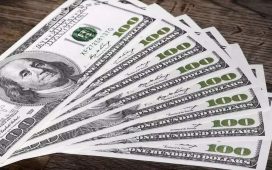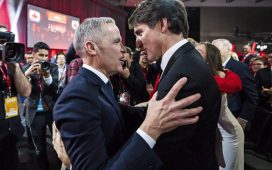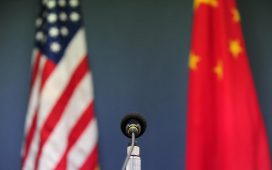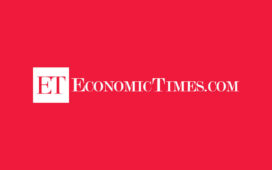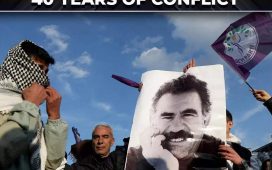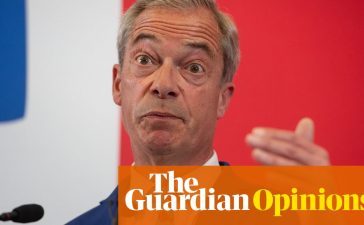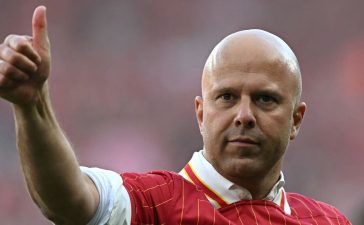
The stalemated war in Ukraine, unyielding Western pressure that compounds Russia’s economic problems, and intensifying infighting among the ruling elite will loom over Putin’s next term and erode his pledges of stability.
THE WAR IN UKRAINE
What Putin expected to be a quick campaign in 2022 to establish Kremlin control over its neighbour has turned into a grinding war of attrition that has incurred massive personnel losses and drained Russia’s resources.
While Russia has prevented Ukraine’s army from making any significant gains during its summer counteroffensive, the Kremlin doesn’t have enough manpower and equipment to mount any major campaigns of its own.
The resulting stalemate sets the stage for months of positional fighting during the winter, when the weather hampers any large moves and likely will make both sides focus on protecting their gains.
Putin expects that continuing warfare will gradually exhaust Ukrainian resources and undermine Western support for Kyiv, but a protracted conflict also exacerbates Russia’s economic woes, deepens social problems and fuels divisions within the ruling elite. Tatiana Stanovaya of the Carnegie Russia Eurasia Center pointed to a widening gap between technocrats holding top administrative jobs and hard-liners who are eager to extend their sway and push an even more hawkish course. “The longer uncertainty remains around the outcome of the war, the louder the voices of the revisionists will grow,” Stanovaya wrote in an analysis. “Instability, military setbacks, escalation, and Russia’s deteriorating position in the war all serve to empower the revisionists and undermine the administrators.”
TENSIONS WITH THE WEST
Despite Moscow’s hopes that Western assistance for Ukraine will dwindle amid growing fatigue with the war and election campaigns in the U.S. and other Western countries, Washington and its allies have vowed to continue supporting Kyiv for as a long as necessary. Both the US and the European Union also pledge that the Israel-Hamas war will not distract them from helping Ukraine.
While bruising US and EU sanctions have failed to deal a knockout blow to the Russian economy and force the Kremlin to halt its invasion as some in the West have expected, the restrictions have curtailed revenue from oil, gas and other key exports and sharply limited access to Western technology.
Adding to the pain, 300 billion euros of Russian Central Bank reserves have been blocked in the West.
Putin has sought to counter the sanctions by strengthening ties with China, which has become a key market for Russian oil and gas and a source of high-tech imports. Some observers have noted that the growing dependence on China will likely cement Russia’s role as a junior partner in the alliance and limit Putin’s room for maneuvering.
Amid Western efforts to block sources of weapons and military technology, Moscow has turned to Iran for drones to attack Ukrainian energy systems and other vital infrastructure. In September, Putin hosted North Korean leader Kim Jong Un for talks on expanding ties, a meeting that the U.S. said resulted in a deal that saw Pyongyang deliver munitions to Russia for the war.
Despite Putin’s efforts to offset crippling Western sanctions, they will continue to weaken the Russian economy, reduce Moscow’s war potential and dash any hopes for recovery. The U.S. and the EU have worked methodically to tighten their implementation and close any loopholes, targeting companies in third countries that have helped Moscow bypass the restrictions.
OTHER ECONOMIC CHALLENGES
Shifting energy exports to China and India has helped offset losing access to lucrative European markets, and Russian industries have found new import channels to circumvent U.S. and EU restrictions on technology.
Russia’s economic output fell by 2.1% last year under Western sanctions, but it’s officially forecast to expand by 2.8% this year, a performance that Putin hailed as a sign it was on the road to recovery. The growth has been driven mostly, however, by a sharp increase in government spending, predominantly linked to the war. Next year, defense allocations will increase by more than 70% and account for about a third of total government spending.
The mobilisation of 300,000 reservists in fall 2022 and the recruitment of nearly 400,000 contract soldiers will weigh heavily on the economy, and the exodus of hundreds of thousands more who fled the country will compound labor shortages that stymie prospects for longer-term growth.
At the same time, the depreciation of the ruble, which has lost a third of its value this year, has fueled inflation, forcing the Russian Central Bank to raise the key interest rate to 15%. The Cabinet also has tried to boost the ruble by tightening demand for exporters to convert their hard currency earnings.
The fundamental economic problems will remain, with little potential for growth as European markets remain shut and the oversized military spending steals resources from other sectors.
POLITICAL TURMOIL AND DYSFUNCTION
Opinion polls show Putin’s approval ratings around 80%, reflecting the lack of competition in the tightly controlled political system and rallying around the flag amid the war.
But even though Putin has eradicated most dissent and built top-down control devoid of any checks and balances and political competition, that seemingly total command proved illusory during June’s mutiny by mercenary chief Yevgeny Prigozhin. His Wagner contractors swept over military headquarters in southern Russia and mounted a quick march toward Moscow without any serious resistance. The brief uprising marked the most serious challenge to Putin’s rule since his ascent to power, badly denting his authority.
Despite denials of government involvement, the death of Prigozhin and his top lieutenants in a mysterious plane crash in August was widely seen as an act of vengeance that helped restore Putin’s credibility among the elites. But the fragility of the Kremlin’s controls has become all too apparent.
Another blow to the Kremlin’s carefully cultivated notion of total control was the riot at an airport in the Russian province of Dagestan, targeting a flight from Israel. The mob rushed onto the tarmac, chased passengers and threw stones at police. It challenged the narrative that ethnic and religious groups co-exist in harmony in Russia and weakened Putin’s claim that Moscow wasn’t taking sides in the Israel-Hamas war.
Observers saw the riot as yet more proof of the Kremlin’s inability to maintain control over an increasingly restive political scene and was a harbinger of more upheaval.
“We have seen a striking dysfunction of law enforcement agencies and the whole of the federal government,” political scientist Ekaterina Schulmann observed in a commentary. “Like in the case with Prigozhin, a sudden threat and rapidly unfolding developments have left the system in complete paralysis.”


